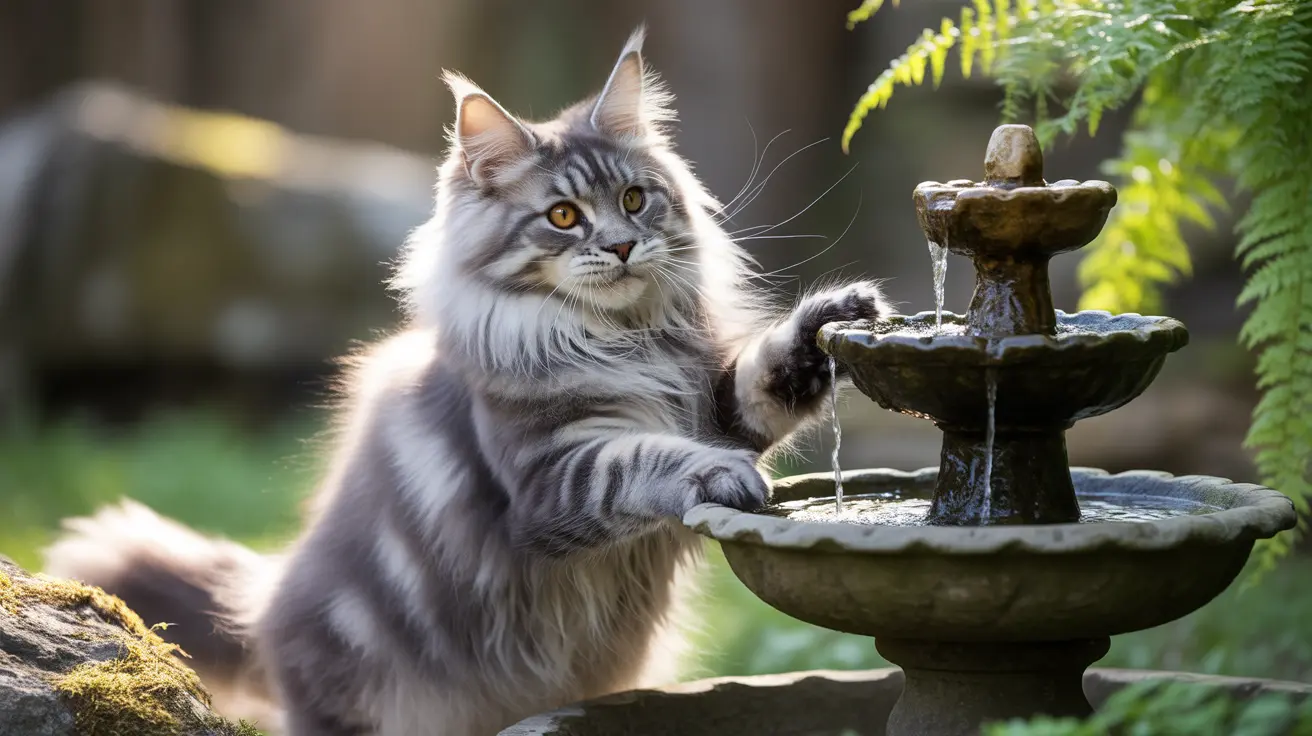The Evolutionary Connection to Water Obsession
Cats' relationship with water is deeply rooted in their evolutionary history. Despite popular belief that all cats hate water, many of our domestic cats' wild ancestors actively sought out running water sources, recognizing them as safer and fresher than stagnant pools.
This instinctual preference for moving water remains strong in domestic cats today, explaining why many prefer drinking from faucets or fountains rather than still water in bowls.
Natural Instincts and Sensory Appeal
The movement and sound of running water naturally attract cats' attention. Their acute senses are particularly tuned to:
- The sound of running water, which signals freshness
- Light reflections and ripples that trigger hunting instincts
- The fresh taste and smell of moving water
- The tactile experience of touching and playing with water
Breed-Specific Water Preferences
Some cat breeds are naturally more inclined to interact with water. The Turkish Van, often called "the swimming cat," is famous for its love of water. Other water-enthusiastic breeds include:
- Maine Coons
- Bengals
- Norwegian Forest Cats
- Abyssinians
- American Shorthairs
Health Considerations and Water Obsession
While some water fascination is normal, sudden changes in water-related behavior might indicate health issues. Watch for these warning signs:
- Excessive thirst or water consumption
- Frequent urination
- Obsessive water-seeking behavior
- Lethargy or other behavioral changes
These symptoms could indicate conditions like diabetes, kidney disease, or hyperthyroidism, requiring immediate veterinary attention.
Environmental Factors and Learning
A cat's environment and early experiences significantly influence their relationship with water. Cats exposed to positive water experiences as kittens often maintain a lifelong fascination. Additionally, factors like bowl placement, material, and cleanliness can affect their water interaction preferences.
Creating Positive Water Experiences
To support your cat's healthy relationship with water:
- Provide fresh water daily in clean, whisker-friendly bowls
- Consider installing a pet water fountain
- Use glass or stainless steel water containers
- Place water bowls away from food and litter boxes
- Monitor water consumption patterns
Frequently Asked Questions
Why is my cat obsessed with drinking water from the faucet instead of their bowl?
Cats often prefer running water because their instincts tell them it's fresher and safer than standing water. The movement and sound also make it more appealing, and some cats find drinking from a faucet more comfortable than bending over a bowl.
Could my cat's fascination with water be a sign of an underlying health problem?
Yes, sudden increased interest in water, especially when accompanied by excessive drinking, could indicate health issues like kidney disease, diabetes, or hyperthyroidism. Consult a veterinarian if you notice significant changes in water-related behavior.
How does whisker fatigue affect a cat's water drinking habits?
Whisker fatigue occurs when a cat's sensitive whiskers repeatedly touch the sides of narrow bowls, causing discomfort. This may lead cats to seek alternative water sources or paw at their water to test depth before drinking.
Which cat breeds are more likely to enjoy playing with or drinking water frequently?
Turkish Vans, Maine Coons, Bengals, Norwegian Forest Cats, and Abyssinians are known for their increased interest in water. These breeds often enjoy playing with water and may even participate in water activities.
What can I do to encourage my cat to drink more water using safe and appealing methods?
Install a pet water fountain, provide multiple water stations throughout your home, use wide, shallow bowls, and ensure water is fresh daily. Some cats prefer their water away from food bowls, so experiment with different locations.
Understanding your cat's water obsession helps you better care for their needs while ensuring their behavior stays within healthy boundaries. Remember to consult with your veterinarian if you notice any concerning changes in your cat's water-related behaviors.






